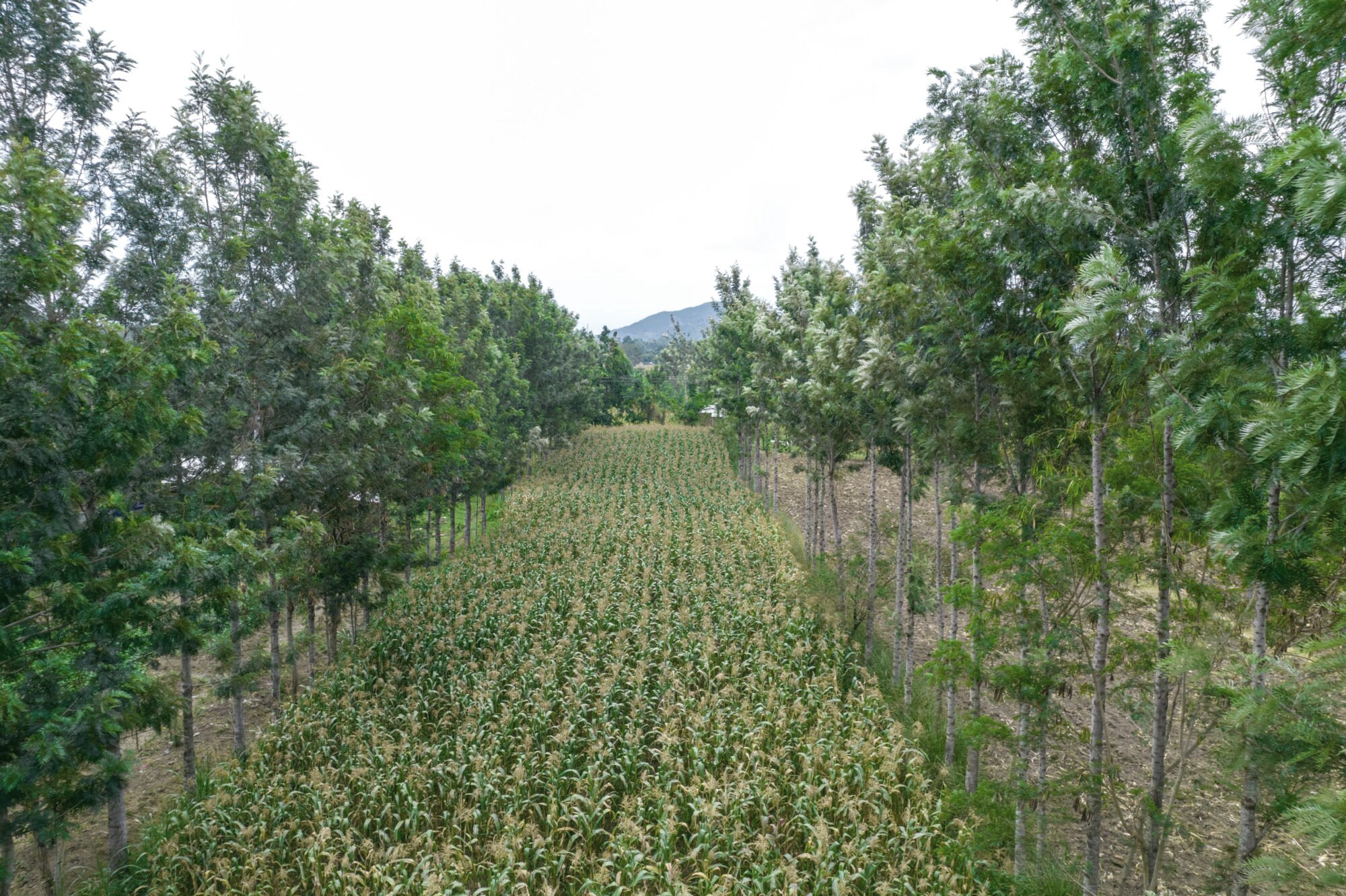
agroforestry
“The mimicking of a healthy ecosystem
with the goal of producing high quality food, medicine and other organic materials whilst regenerating and improving landscapes continuously.”
A practice that has been around for centuries in various parts of the world, Agroforestry is a sustainable and regenerative way to produce high quality, organic foods.
Good for humans, good for animals, good for the planet, providing a brighter future ahead.
Picture this:
Tree lanes are placed 6m apart and strategically planted in height layers, allowing for fruit trees, wood trees, shrubs, and supporting species to be densely planted together in perfect harmony.
Vegetable crops flourish inbetween the lanes, natural cycles are restored, lifestock comes in for support, the soil is thriving, and food is abundant all-round.
By planting Agroforests, we can create diverse and productive landscapes that mimics natural ecosystems and provide a long list of environmental, economical, and ethical benefits. The incredible thing is that these systems allow for nature to balance itself out, and eventually minimal maintenance is needed. It’s a way of growing food that allows both nature and humans to thrive in harmony.
Agroforestry is a solution for achieving food security, environmental sustainability, and poverty reduction, there’s no wonder it is increasingly seen as the future of agriculture.
BENENFITS
Low-cost low-maintenance way for people to grow healthy food
Increases biodiversity and wildlife habitat
Provides economic opportunities for farmers and local communities
Diversifies food production and improves food security
Produces more food than monoculture on the same amount of land
Enhances carbon sequestration and mitigates climate change
Drastically improves soil health and fertility
Protects and conserves natural resources, such as water and forests
Increases resilience to climate change and extreme weather events
Reduces soil erosion and water runoff
How does it all work together?
Trees, crops, livestock, humans - working together in a way that benefits all.
Trees, for instance, can do wonders for the soil by fixing nitrogen and regulating water cycles. They also offer shade for crops, create biomass to use as mulch/compost, and provide habitat for wildlife; which is critical for ecosystem health and resilience. A variety of trees are incorporated, each with a different purpose. Fruits, wood, oils, medicines… all in one space. Due to the dense strategic placing, a much higher volume of trees are planted per hectare compared to monocrop agriculture.
Crops that are planted inbetween can provide income and food for farmers, nutrients for the trees, fodder for livestock, and expand plant diversity to meet all nutritional needs. This could be anything from vegetables, beans, grains, grasses, teas, coffee, berry bushes… whatever works in your climate.
Livestock too plays a vital role in the overall system functionality. They add nutrients to the soil, manage pests, clear weeds, and offer extra diversity with things like eggs, milk, wool, meat. For example, chickens scratch over the soil looking for bugs, goats feed on weedy pest trees, cows mow pasture and worms turn food scraps into worm juice and worm castings.
Humans are like the conductor, putting all of these aspects back together as they naturally would be, mitigating the effects of climate change. This way of producing food offers many opportunities for farmers and local communities. Factors like food security and multiple income streams lead to empowerment and improved life quality. Spreading education on how to preserve and work with nature instead of exploiting it is something that will benefit all life on earth. We created the problems, now it’s on us to fix them.
How does it help with climate change?
The current agricultural sector is responsible for about a fourth of global greenhouse gas emissions. Soils are severely degarded, chemicals reduce biodiversity, forests are cleared - at least 8 million hectares of the tropical rainforest are currently cleared annually, mainly for crop cultivation and cattle ranching.
Theres a common practice called tillage, which releases CO2 from the soil into the atmosphere, exactly where we do not want it.
Agroforestry avoids this - and instead through photosynthesis - trees, plants and healthy soils naturally pull CO2 (the main greenhouse gas) out of the atmosphere to store it in their biomass. The more biomass, the more CO2 can be stored. As agroforestry systems are very rich in biomass, they are very effective in doing this.
With its ability to provide food, fuel, and other resources while also counter-acting the effects of climate change, agroforestry represents a sustainable solution for growing food in the 21st century.
In short, agroforestry is like a party where everyone is invited, and everyone has a good time.
It's an effective and sustainable way to manage land and natural resources, whilst promoting environmental, economic, and social benefits.
Making the world a better place - one tree at a time.
Want to read more?
If you would like to find out more about this amazing solution for many of our environmental problems, click the button below and head over to Renature.co - there you’ll find many facts in a single page.






